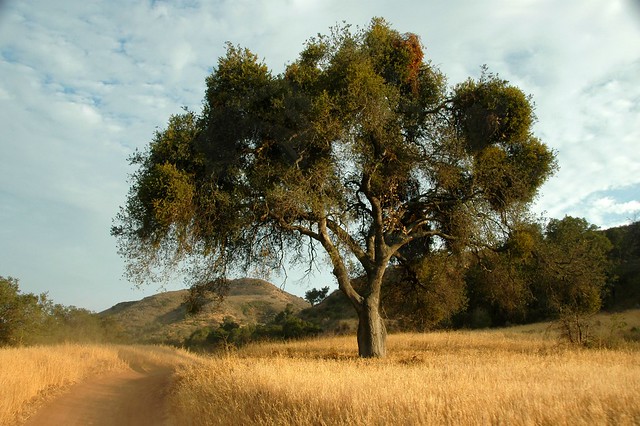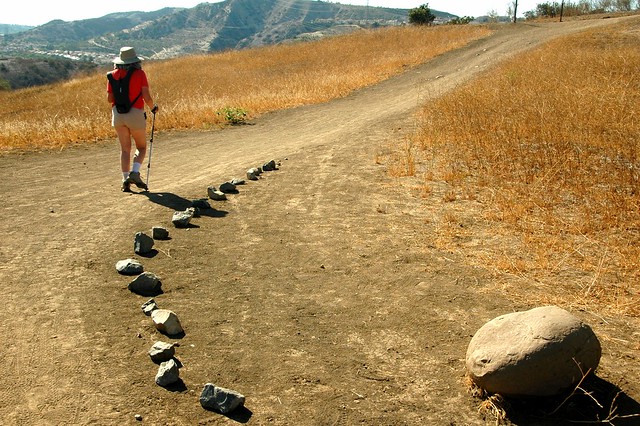Monthly Archives: July 2014
Cheating on Four Wheels at Limestone Canyon
“This feels like cheating,” I kept saying. I had hiked to this point from two different directions: along the Limestone Canyon Trail from the Augustine trail head and up the more difficult Agua Chinon route. A four wheel drive truck with ten seats in the back brought us to the brink of Limestone Canyon Wilderness Park’s most famous natural landmark, the “Little Grand Canyon” or “The Sinks”. The differences that made the journey worthwhile were that riding in the truck allowed me to carry two cameras instead of one and we were there in the late afternoon, a pleasure denied those who took advantage of open access days and midweek hikes up Agua Chinon Canyon.
My company consisted of Lynn, a woman we knew from the Journey to the Middle of Nowhere named Liz, a quiet man with a Tamron camera, another man with a background in geology who was not so quiet but interesting nonetheless, two elderly women with blonde hair on their faces, another old woman who we had met on the JTTMON tour, and more docents than you could shake a stick at.
The Summer Desert of Santiago Oaks
We’d never been to Santiago Oaks Regional Park even though we’d lived only half an hour away, so we laded ourselves with plenty of water and drove down Santiago Canyon Road to find it. After nearly missing the turn, we followed a confusing set of bends through a wealthy neighborhood that brought us to the main gate and the parking lot.
Eucalyptuses dominated the forest. Pines and a couple of exotics that I did not recognize filled much of the space. Laurels and sycamores thronged the wash. Oaks seemed scarce aside from a few oft-photographed trees along the Santiago Creek Trail and a few youngsters planted as part of a restoration project.
The Other Grand Canyon
Spider Wasp
Birds subdued their calls. I saw no tracks other than boots and bicycle treads, so I dedicated the day to understanding the landscape. My pocket notebook was filling up with entries about the geology of Whiting Ranch — how the ridges north of Dreaded Hill came in waves, each of them consisting of a different geological formation. A loud buzz startled me from my observations. A blue-black insect the size of a bumblebee shot out of the sage scrub and zoomed down the road toward me, zigzagging before it hit me. I followed it — first by sight, then by foot — as it flew a little further and alighted on the stubble at the edge of the road.
Portola Hills
Going Down to Aliso Peak
Lynn and I decided we needed a short hike after our storming of Black Star Canyon the day before, so we headed down to Laguna Niguel and parked the car at Seaview Park for the downhill walk to Aliso Peak.
Yes, you read that right.
Lynn asked me a second time if I was sure about what the guidebook had said.
“Yes, it is downhill,” I said.
“How do you do that?”
“You’ll see.”
Orange County’s “Little Grand Canyon” — it looks more like a Little Capitol Reef to me, but it is still impressive. If you would like to visit, go to the Irvine Ranch Conservancy’s web site.
Going in Circles in Black Star Canyon
It was my intention to arrive early before other hikers obliterated the tracks of the previous night, but my punctuality didn’t help: at least one docent preceded me and other walkers passed me so there was nothing to see other than scat by the time I scanned the trail. Saturday offered another open access day on which the general public could explore the lands to the east of Black Star Canyon Road. We picked up our lime green passes at the registration table, walked up the road, and started our journey into the dry forest of Baker Canyon. Eucalyptus gave way to live oaks and sycamores as we marched further in. Baker Meadow was lovely even with the dead grass. Coyotes were eating some kind of pitted fruit — the cactus hadn’t ripened yet so it wasn’t that — and leaving purplish mounds in the middle of the path. We lost the forest canopy and trudged up the Hall Canyon Trail — a hard climb that led to a mercy of switchbacks and a crest over which we passed to get to the flood plain of Silverado Creek.










